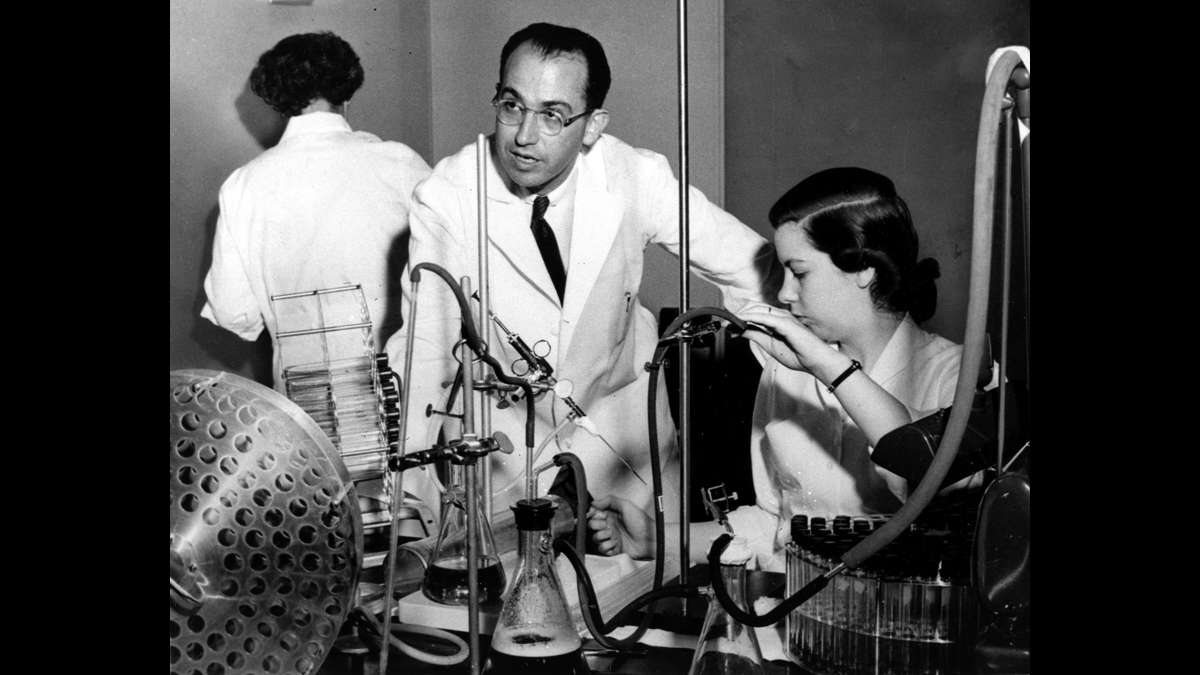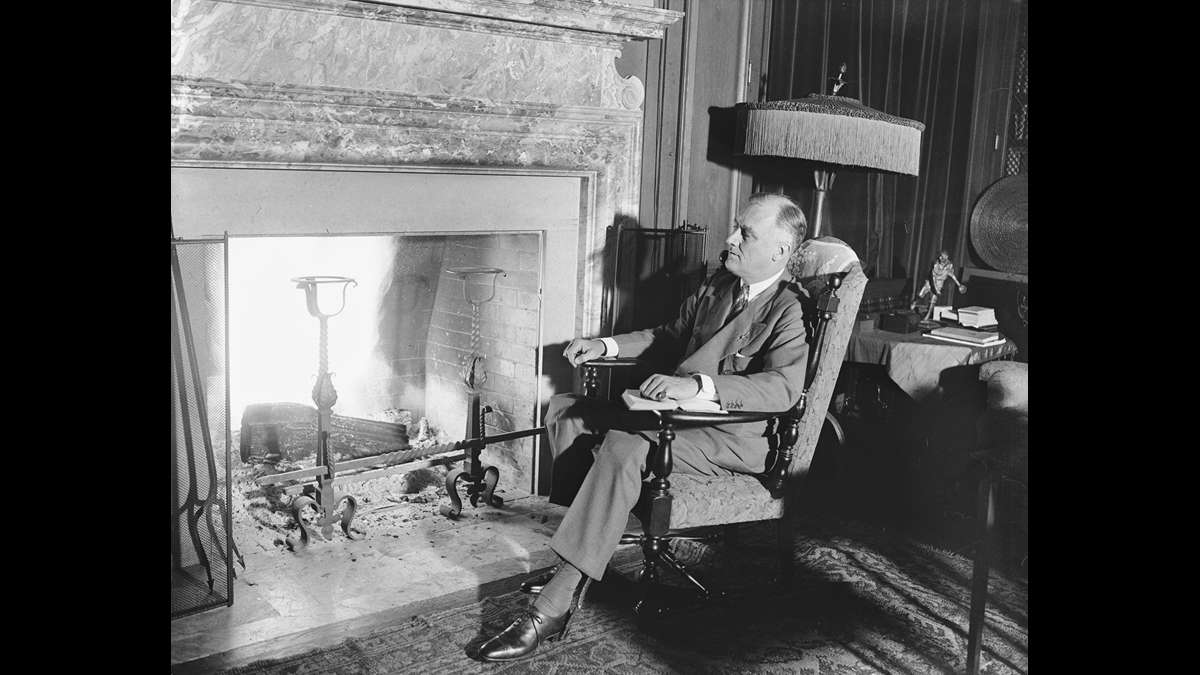60th anniversary of polio vaccine, first administered in Pa.
ListenIf you’re of a certain age, you may remember as a child being given a sugar cube in a small paper cup. But what you may thought was a treat was in fact your immunization against polio.
It’s been 60 years since Dr. Jonas Salk personally inoculated 137 students at Arsenal Elementary School in Pittsburgh, the first recipients of a new vaccine to prevent polio.
A newsreel at the time described the February 1954 vaccination clinic as a historic turning point. “The vaccine works! It is safe, effective and potent. The tests prove it is 90 per cent effective in preventing paralytic polio. And some day, says Dr. Salk, the vaccine may completely eradicate the menace of polio,” it trumpeted.
By April 1955 20,000 volunteers, 20,000 doctors, and 1.8 million school children were immunized, and a terrifying disease was on the run. True to Salk’s prediction, polio was eradicated — at least in the United States — by 1979.
At first, the vaccine developed by Salk and Dr. Albert Sabin at the University of Pittsburgh was injected. Later, it was given by Sabin vaccine-that sugar cube dosed with serum and taken orally.
Polio infection can occur by consuming contaminated food or water. Children are the most common victims, but unvaccinated adults are also susceptible. The March of Dimes says once infected, there is no cure. Treatment may include fluids, medication, and rest. Hot packs to ease muscle stiffness and pain can also help. Severe cases may require supplemental oxygen or a ventilator.
Polio symptoms vary widely, said Dr. Donald Burke is Dean of the University of Pittsburgh Graduate School of Public Health and the Jonas Salk Chair of Global Health. “Some persons can have no symptoms, some people can just have a fever and headache, and others can have a transient mild weakness of one limb,” Burke said. “The most severe type is when the virus enters into the brain stem, in the lower parts of the brain, and causes paralysis of all of the muscles up and down the body, including the breathing muscles in which case then the person-usually a child-had to go into-at that time-an iron lung and have assisted respiration.”
The most famous public figure in the battle against polio was also a victim: President Franklin D. Roosevelt, contracted polio when he was 39, which inspired him to create the National Foundation for Infantile Paralysis — now known as the March of Dimes.
David Rose, an archivist with the March of Dimes in White Plains, New York, says a joke by a celebrity led to a campaign fundraising name that worked so well, it became the foundation’s new name.
“Eddie Cantor did a radio broadcast and he said, ‘Send your dimes to the White House. We could call it A March of Dimes’ and the White House mail room was inundated with dime and dollar contributions,” Rose said. “That kept up as a campaign tactic for the next few years while Roosevelt was president.”
The United States is well-protected because of immunization, but conditions in war-torn nations like Syria can stall immunization programs and allow polio to stay active. The Centers for Disease Control and Prevention says cases have also been found in Nigeria, Cameroon, Pakistan, and Afghanistan.
Dr. Rebecca Martin, Director of the Global Immunization Division in the Center for Global Health at the CDC, says the U.S. is well protected, but it’s tough to completely eradicate when there is so much international travel.
“We could still see importations, and I think that’s the clear message because a virus can travel wherever it wants how it gets there, through people,” Martin said. “But a matter of, what it will take…will it take ground, and be able to spread is the concern. And that’s where in the United States, with high coverage, we would not expect to see there be further spread occurring in the United States.”
To combat polio’s stealthy nature the CDC labs act as a global resource to monitor, identify and treat people in problem regions. One of the key tools the CDC uses, says Rebecca Martin, is genotyping.
“Viruses that are detected, many of them are sent here to the CDC for genotyping, and this is how we know it’s type 1, type 2, type 3. Then also now we’re able to even identify where the virus is coming from. So, for example, the one in Syria originated in Pakistan,” she said.
Donald Burke at the University of Pittsburgh is optimistic and calls polio eradication “tantalizingly close.” He says with only one apparent strain of the three virus types remaining, it’s a promising sign.
“I take that as pretty good evidence that we can eradicate polio strains. We’ve certainly with 1, probably with 2, and only a third type is the one that is still yet to be eradicated,” Burke said.
The March of Dimes is also making plans to commemorate the centennial of Salk’s birth this October 26.
WHYY is your source for fact-based, in-depth journalism and information. As a nonprofit organization, we rely on financial support from readers like you. Please give today.







